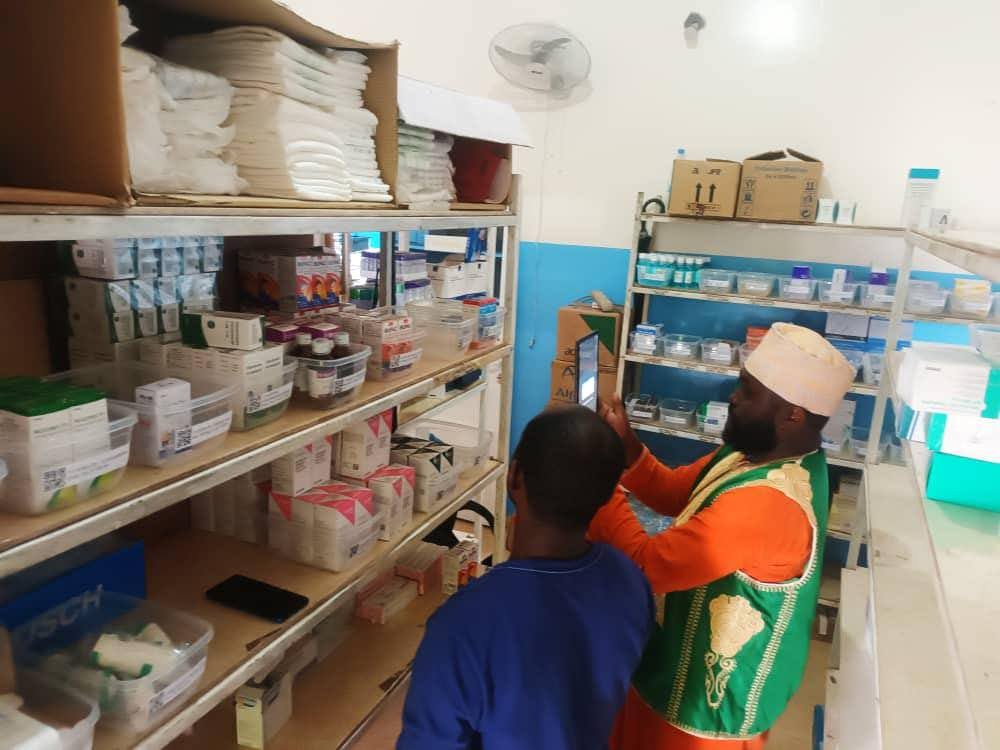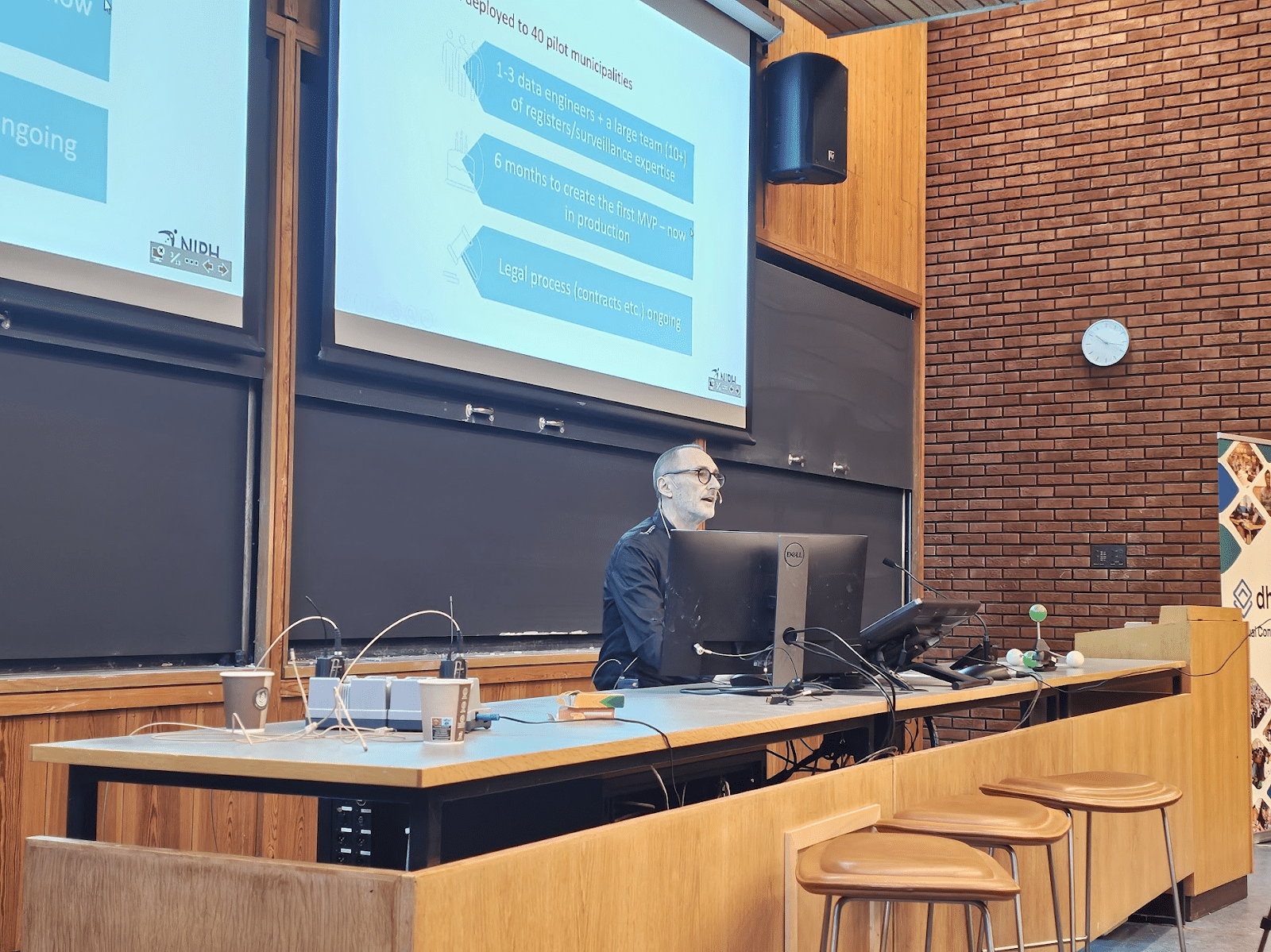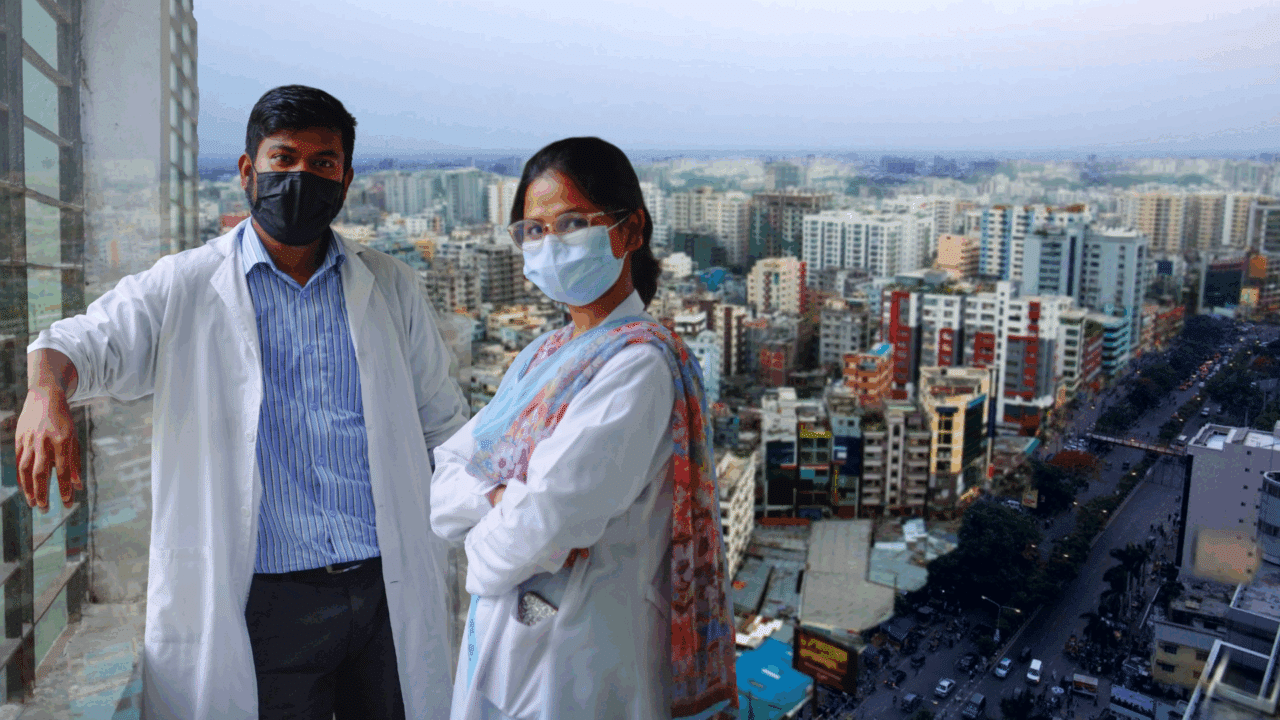
Expanding Routine Data Use to Improve Health Outcomes in Bangladesh
Bangladesh’s Ministry of Health uses DHIS2 to manage data from over 14,000 community clinics and national programs, supporting immunization recovery, HIV care, and women’s health services for millions across the country.
Bangladesh’s health system serves one of the world’s largest populations, with more than 170 million people accessing services through an extensive network of community clinics, upazila (subdistrict) health complexes, and district hospitals. In a country of this scale, the ability to collect, analyze, and use health data routinely is critical to improving access and outcomes.
To meet that need, the Directorate General of Health Services (DGHS) under the Ministry of Health and Family Welfare adopted DHIS2 in 2009. What began as a digital reporting system for aggregate data has since evolved into a nationwide platform for routine data use, supporting programs across immunization, reproductive health, nutrition, HIV, and noncommunicable disease care.
By 2022, DHIS2 was being used in more than 14,000 community clinics, connecting local service data directly to national dashboards, according to research published this year in BMC Public Health. Through sustained investment—with support from partners including the Global Fund, Deutsche Gesellschaft für Internationale Zusammenarbeit (GIZ), Germany’s federal Ministry for Economic Cooperation and Development, UNICEF, and Norad, and with technical assistance and capacity building from local implementation partner HISP Bangladesh—the government of Bangladesh has built one of the most comprehensive DHIS2 implementations globally, demonstrating how routine information systems can drive better health outcomes at scale.
This investment has translated into tangible results across key health programs. During the COVID-19 pandemic, immunization coverage recovered from a 50 percent low to pre-pandemic levels within months, guided by real-time DHIS2 analytics. In the HIV program, more than 3,000 previously untracked cases were identified and re-enrolled in treatment following the introduction of the People Living with HIV (PLHIV) Tracker. And in women’s health, follow-up and treatment completion rates for cervical cancer screening increased with the use of real-time, patient-level dashboards.
A transformative effort to strengthen routine health reporting
Over the course of a decade, Bangladesh’s Ministry of Health and Family Welfare steadily expanded DHIS2 from a pilot reporting tool to the backbone of its national health management information system (HMIS). By the start of the year 2020, DHIS2 was being used to track data across maternal and child health, nutrition, and primary care, with data review meetings institutionalized at district and national levels.
At the facility level, DHIS2 transformed routine data reporting and enabled clinics to maintain individual health records. Community health worker Harun-ar Rashid explained that the system replaced stacks of paper forms and long trips to deliver reports with a few quick digital submissions.
“This makes a huge difference in the way we work. Now I have detailed information about the children living in my area, and I can go back and look at a patient’s history.” Harun-ar Rashid
This foundation was the product of a decade of steady, pragmatic digital transformation. Beginning in 2009 with the first pilot supported by GIZ and HISP, the Ministry’s management information system (MIS) unit introduced DHIS2 nationally by 2011 and trained district statisticians to manage data reporting through a cascade model that reached every subdistrict. By 2015, nearly all government facilities were reporting electronically through a unified platform.
The establishment of HISP Bangladesh in 2014 further helped institutionalize DHIS2 as the backbone of the national HMIS by providing ongoing technical assistance for system configuration, data quality improvement, and capacity building. From 2015 onward, UNICEF partnered with the Ministry and HISP Bangladesh to strengthen data use in maternal and child health and to expand digital immunization systems.
By early 2020, thanks to the concerted efforts of DGHS, HISP Bangladesh, and development partners, DHIS2 had enabled Bangladesh to achieve high reporting coverage from public facilities nationwide, creating a strong digital foundation that would prove essential when the COVID-19 pandemic disrupted health service delivery.
Using DHIS2 data to restore immunization during COVID-19
The COVID-19 pandemic was an unprecedented disruption to routine health services. When Bangladesh went into lockdown in March 2020, immunization sessions across the country were abruptly suspended. According to DHIS2 data analyzed by researchers in the country, 7% of fixed and 28% of outreach vaccination sessions were canceled in April 2020, causing national coverage to fall to 50% in 36 out of 64 districts. In short, more than 284,000 children missed their scheduled pentavalent vaccine doses.
Bangladesh entered the pandemic with strong experience in digital immunization management. Just months earlier, the Ministry of Health and UNICEF had led one of the world’s largest digital measles–rubella (MR) vaccination campaigns, reaching more than 36 million children in seven weeks. Teams used DHIS2 to plan sessions, track daily progress, and supervise field work through the Android Capture App. The campaign replaced paper-based workflows with real-time data, showing how digital tools could strengthen coverage, coordination, and accountability nationwide.

When COVID-19 hit, the Expanded Programme on Immunization (EPI) team built on this experience, using real-time DHIS2 dashboards to track where cancellations were highest and where supply chain gaps existed. By May 2020, these data informed targeted interventions—virtual coordination meetings, emergency vaccine distribution, and infection-prevention training for health workers. As a direct result, immunization coverage rebounded to above 90% in most districts within four months, returning to pre-pandemic levels by early 2021.
Researchers noted that “DHIS2 immunization data analysis sparked all these initiatives, which were crucial in effectively bringing vaccination rates back to their pre-pandemic levels.”
Tracking HIV care and reducing loss to follow-up
In the HIV program, DHIS2 data have supported a shift from manual, disconnected reports to integrated digital case management. Prior to 2021, program data were paper-based, leading to incomplete records and thousands of patients lost to follow-up.
In December 2021, DGHS launched the People Living with HIV (PLHIV) Tracker within DHIS2 to capture individual-level data on diagnosis, ART enrollment, and viral load testing. According to researchers within the Ministry of Health, over two years, the system helped identify and re-enroll approximately 3,000 previously missing cases into treatment and reduced the number of lost-to-follow-up cases across ART centers.
The same researchers reported that “target levels of several HIV indicators are now considerably easier to achieve because of real-time data collection in the database.” Dashboards now visualize patient retention, ART adherence, and viral load suppression—allowing health managers to intervene early when patients miss follow-ups.
Routine data driving women’s health programs
Bangladesh has also used DHIS2 to improve women’s health through the Cervical Cancer Screening and Management Tracker, which enables follow-up from screening to treatment across the entire care pathway. Introduced nationally in 2019 as part of the country’s transition from aggregate to individual-level data, this tracker has made Bangladesh one of the first low- and middle-income countries to apply DHIS2 for population-wide cancer screening.
As of 2024, more than 14,000 community clinics were using the system to register women and record screening outcomes, providing the Ministry with a near-complete national dataset.
Cervical cancer prevention in Bangladesh relies primarily on Visual Inspection with Acetic Acid (VIA)—a low-cost screening method to detect early signs of precancerous lesions. VIA provides results immediately, allowing same-visit treatment and making it suitable for use in primary and community health facilities.
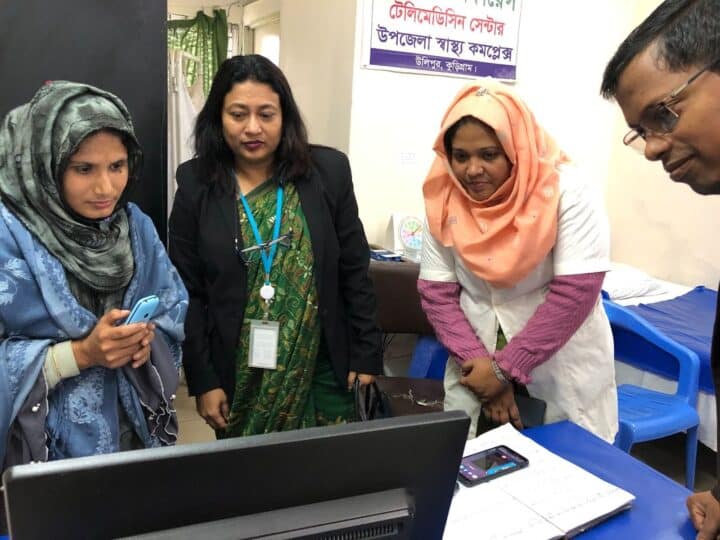
According to research in the journal BMC Global and Public Health, between 2018 and 2023, the DHIS2 registry recorded 1.56 million women screened, of whom 3.3 percent were VIA-positive; 40 percent attended colposcopy, and among those treated, 82 percent received thermal ablation and 18 percent underwent LEEP. Earlier analysis of 2014–2022 data documented 3.36 million VIA tests and a 3.6 percent positivity rate, with substantial district-level variation.
Introducing DHIS2 case tracking has enabled managers to identify under-performing districts, monitor treatment completion, and plan targeted supervision. This shift from aggregate reporting to patient-level data has improved program quality and accountability nationwide.
Building sustainability through data use and empowerment
The success of these programs reflects Bangladesh’s broader commitment to institutionalizing data use across all levels of the health system. Regular review meetings, digital supervision tools, and performance dashboards have made DHIS2 data a central part of how decisions are made—from community clinics to national directorates.
This progress has been supported by HISP Bangladesh, which provides ongoing technical assistance to the Ministry of Health and Family Welfare for the maintenance, customization, and expansion of DHIS2. In addition to developing the Ministry’s Community Health Information System (CHIS), HISP Bangladesh supports capacity building, system design, and applied research that strengthen both data use and the long-term sustainability of the national platform.
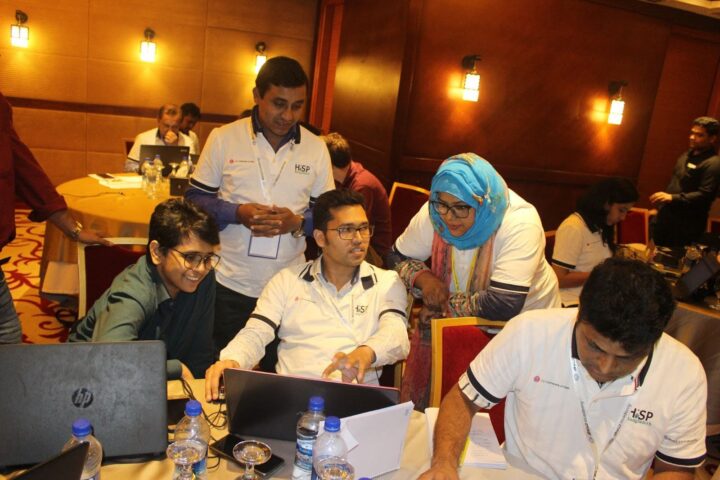
Evidence shows that these digital systems have also empowered health managers at the local level. Research published in early 2025 found that the use of DHIS2 dashboards increased decision-making autonomy, responsiveness, and transparency. The study observed that “health managers who regularly accessed DHIS2 dashboards demonstrated greater autonomy in resource planning and improved responsiveness to local challenges”
Together, these organizational and technical investments underpin the sustainability of Bangladesh’s DHIS2 system. By embedding new program trackers—such as for HIV, cervical cancer, and nutrition—within the national DHIS2 platform, the government avoids duplication, ensures interoperability, and reinforces a unified culture of data-driven decision making. The continued refinement of these systems also reflects lessons learned from implementation—such as the need to strengthen connectivity, improve national ID registration for patients, and link laboratory data to clinical records. Addressing these challenges is part of Bangladesh’s ongoing effort to consolidate its DHIS2 ecosystem into a fully interoperable national digital health platform.
A model of sustainable digital transformation
Bangladesh’s national DHIS2 platform has become a global example of how digital systems can strengthen public health. Over more than a decade, the Ministry of Health and Family Welfare has built a platform that is both technically robust and locally owned—showing that sustained investment in data systems leads to real improvements in service delivery and health outcomes.
This progress reflects years of steady collaboration between the Ministry and HISP Bangladesh to embed data use at every level of the health system. From the first DHIS2 rollout in 2011 to today’s nationwide patient-level trackers, the country has built a culture of evidence-based management that continues to expand across programs.
As Bangladesh moves forward with digital registries for immunization, HIV, nutrition, and noncommunicable diseases, its DHIS2 experience offers a model for other countries seeking to institutionalize routine data use. It demonstrates that sustainable digital transformation is achieved not only through technology, but through co-creation, south-south collaboration, and shared commitment to using data for better health. Bangladesh’s experience shows how open, locally driven innovation can inspire other countries to build resilient, data-powered health systems of their own.
